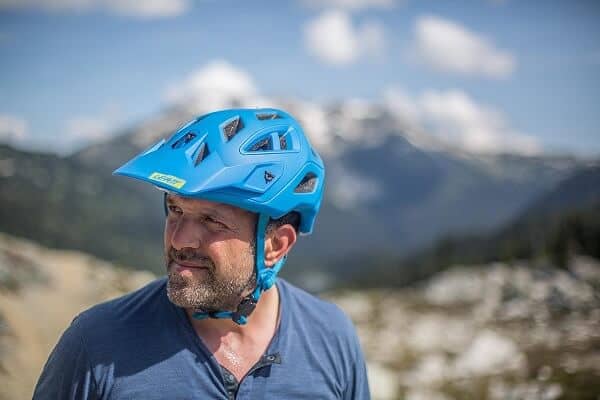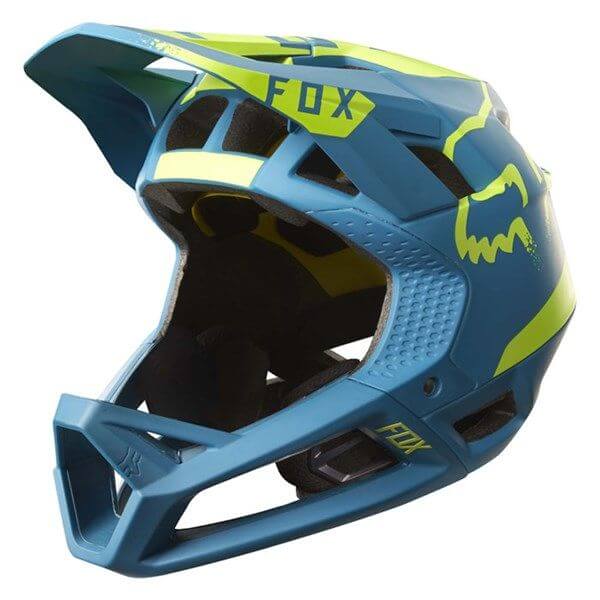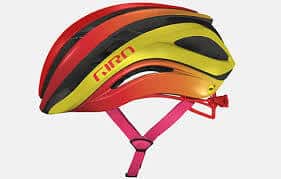

Road Bike Helmets vs. Mountain Bike Helmets
Next to a bike, a good cycling helmet is the most essential thing for the safety and security of a bike rider. Also choosing the correct type of helmet according to riding type is very important to make the rider feel comfortable during riding and to save him/her from all sorts of inconveniences. Road and mountain bike helmets are two different helmet types used by riders for cycling. The names suggest that road bike helmets are appropriate for road biking, and mountain bike helmets are more suited for mountain cycling or rough cycling. This must mean that road bike helmets and mountain bike helmets have some differences. What are the exact differences between these two helmet categories which account for their different uses? We have tried to answer this question in this article.
Road helmets come in a sleeker, more compact, and aerodynamic design and these have a greater number of ventilation holes for easy airflow. Also, these helmets do not have a visor. In contrast, mountain bike helmets are of a heavier, bulkier, and beefy structure with few small vents for limited air movement. The visor is also present in these helmets.
➥ Some people prefer to use the same helmet for both road and mountain biking. You can do so by just removing the visor from the MTB helmets.
Mountain Bike Helmets vs Road Bike Helmets for Protection
The STAR convention is a specialized method for assessing helmet protection ability. In simple words, this protocol determines to what extent a helmet can decrease the chances of concussion. Again, the Multi-directional impact protection system (MIPS) is a technology specially devised to diminish the rotational forces that are responsible for concussion-like injuries during cycling.
The Annals Biomedical Engineering conducted a study in 2019 in which 30 helmets were tested following the STAR. In this study, road helmets were found to perform better than mountain bike helmets. Further, the performance of helmets containing MIPS layers was proved better than those without MIPS. [Source]
Mountain Bike helmets

Mountain Bike Helmet
The design of MTB helmets is a bit beefy with added head coverage on the back and sides. Naturally, mountain cycling involves a lot of moving ups and downs on the rough terrains. This bulky structure of the helmet will ensure that it stays on your head during all those air moments. An adjustable visor is incorporated in MTB helmets for added protection on your face. This acts as a shield for your eyes from scorching rays of sun and specks of mud and dirt during riding. Your eyes will also remain shielded from low hanging branches while racing through woody trails.
Mountain bikers are exposed to many obstacles on the trail as they frequently have to hurdle over rocks and dodge trees. So a smaller number of vents are incorporated so that obstacles lying around on the trail can’t hurt the rider during a fall. An elongated rear section is incorporated to protect the back of the head from injuries. If you desire to race through mountainous trails, these helmets are ideal for you.
Road Bike Helmets

Road bike helmet
[ Source: https://www.active.com/cycling/articles/the-top-road-bike-helmets-for-2019 ]
On the contrary, road bike helmets are lighter and more aerodynamic. Proper ventilation is necessary for road bikers to keep their heads cool and comfortable while racing through smooth roads. That is why you will see that these particular helmets have an enhanced ventilation capacity because of bigger vents. Their shape is more of a round or oval to enhance the aerodynamic efficiency. As visors tend to obstruct the vision during road cycling, these are not incorporated in road bike helmets. Instead of a visor, a built-in eye shield may be added to these helmets to increase visibility. The compact footprint makes road bike helmets lightweight and super-convenient for speedy rides.
Thus, the major differences between a Road Bike Helmet and a Mountain Bike Helmet are:
- Ventilation: MTB helmets have a fewer number of vents than road bike helmets. This feature protects your head when you cycle through coarse terrains and uneven grounds with rocks and hanging branches. Road helmets have a greater number of ventilation holes to increase the flow of air through your helmet and make you feel cool and fresh.
- Vision: A built-in visor is present in MTB helmets. This visor offers protection for your eyes from sun, rain, and dirt. This eye protection feature is really necessary for MTB helmets to see the bumps and potholes clearly in the trail. On the other hand, visors are not incorporated in road bike helmets because these can limit your vision. Rather, the riders wear sunglasses to protect their eyes from sunlight and dust.
- Resistance: In high-speed road biking resistance is increased because of the presence of a lid on the road bikes. Road bikers try to reduce this resistance by wearing tight suits and adding wheels for wind resistance. Thus, wearing a helmet with a lid on it is not fit for road biking. In contrast, resistance is not that much of a concern for mountain bikers.
At a glance:
| Mountain Bike Helmets | Road Bike Helmets |
|---|---|
| A more beefy and bulky design with extra protective features | Light weightedness and aerodynamicity are its strong points |
| Adjustable visor included for enhanced protection | Does not include a visor |
| Less ventilation | Increased ventilation |
| Elongated in shape | Round or oval in shape |
| Suitable for aggressive riding on uneven and rough grounds | More suited for speedy cycling in roads and pavements |
Mountain Bike Helmets vs Road Bike Helmets from the viewpoint of manufacturers
What do the helmet manufacturers say about the underlying differences between these two popular helmet types? Here is a response from Specialized Bicycle Components, Inc., one of the leading manufacturing companies.
“Road helmets are much lighter but will have the same amount of impact protection as mountain bike helmets”. Another manufacturer said that Visors are present in MTB helmets, a feature that road bike helmets seldom have. [Source]
Is there any similarity?
Regardless of the type, bike helmets serve the common purpose of protecting you from possible injuries during cycling. No matter how much we highlight the differences, they must have some similarities.
- Cushioning is incorporated in both types to keep you snug and comfortable during a ride, though the level of cushioning may differ in the two helmet types.
- Some special impact protection technology is featured in both the bikes to prevent head injuries in case of a fall. MIPS is an example of such technology.
- Both the helmets have chin straps so that you can fasten the helmet around your neck. This feature helps to keep the helmet in the proper position during speedy rides.
Frequently Asked Questions
Q1. Why do mountain bike helmets have visors and road bike helmets don’t?
Ans: Road bike helmets don’t have visors because visors can inhibit vision and a clear vision is needed in road biking. So, road cyclers use sunglasses to shield their eyes from scorching sunlight and dust and dirt. On the other hand, while riding a mountain bike, the rider’s posture remains more upright compared to riding a road bike. Hence the rider’s vision is not obstructed by visors. Instead, these work as a shield for the eyes from the surrounding dust, dirt, and sunlight.
Q2. Can concussions be prevented by using bicycle helmets?
Ans.: No, there isn’t any helmet that is proven to prevent concussions. At present helmets are built of materials that can absorb the heavy impact energies responsible for cranial fractures and injuries in the brain. To prevent concussions, special technologies like Koroyd and MIPS have been designed by helmet manufacturers, but these aren’t cent percent proof against concussions.
Q3. Can a mountain bike helmet be used for road biking?
Ans.: Yes, it can be used. But the visor on the MTB helmet can obstruct your vision. In a long ride, you might feel stuffy and sweaty owing to the limited ventilation and beefy design. So, a lightweight and aerodynamic road bike helmet of good quality would be a smarter choice for road biking.
Q4. What are the best MTB helmets?
Ans. Some of the best MTB helmets of 2021 are:
- Giro Caden MIPS
- Troy Lee Designs A2
- Bell Formula MIPS
- Bontrager Solstice MIPS
- POC Octal X Spin
- 100% Status
Conclusion
Even more than which type of riding you are doing, which helmet type you will wear during cycling depends on your personal choice. Do you prefer greater ventilation, an airy feeling, and the sleek design of road bike helmets? Or do heavy structure and visor incorporated mountain bike helmets increase your sense of safety and security? In the end, it is solely your choice. Whatever everyone says, do choose the type of helmet which makes you enjoy cycling at its best.
